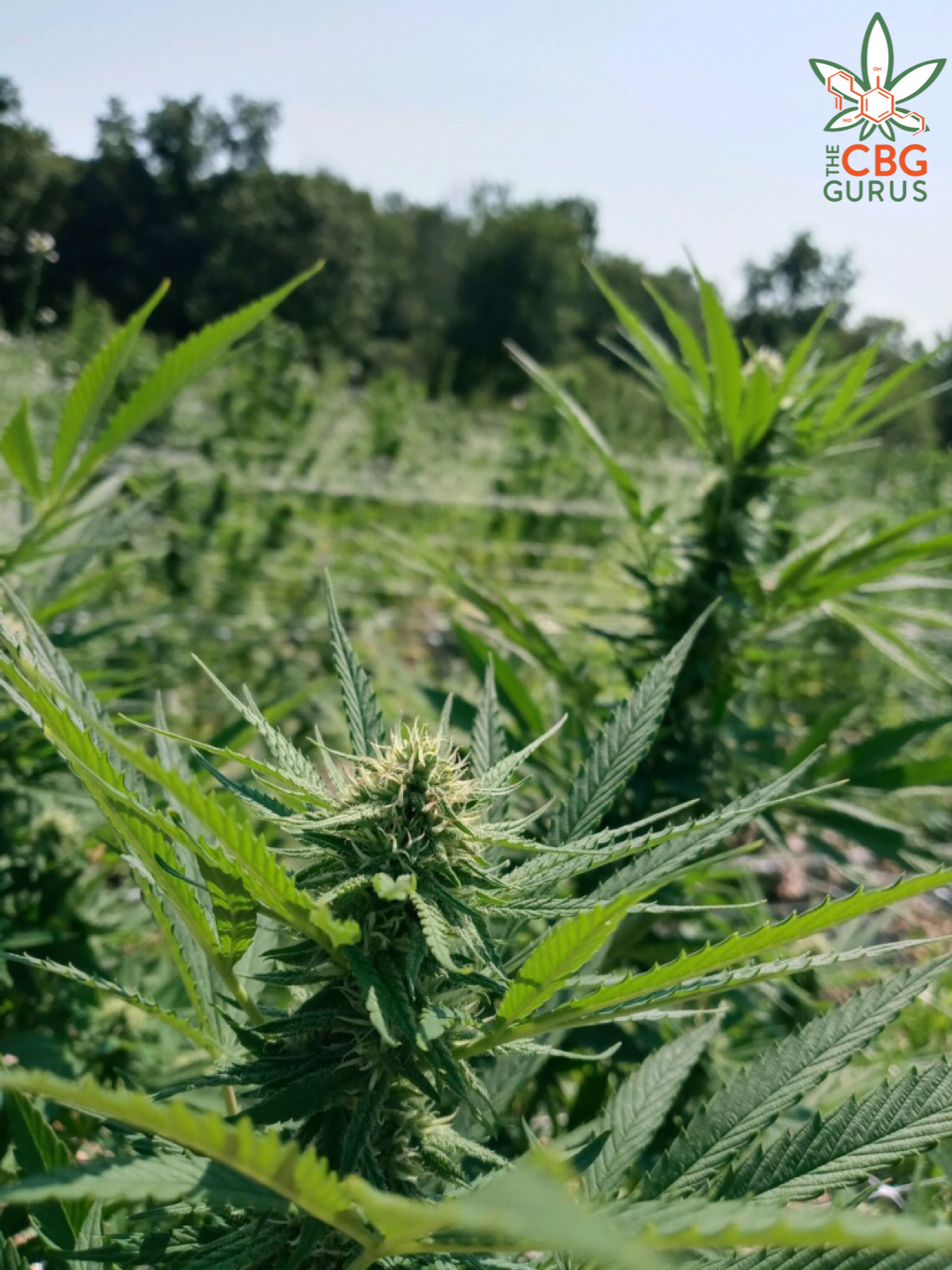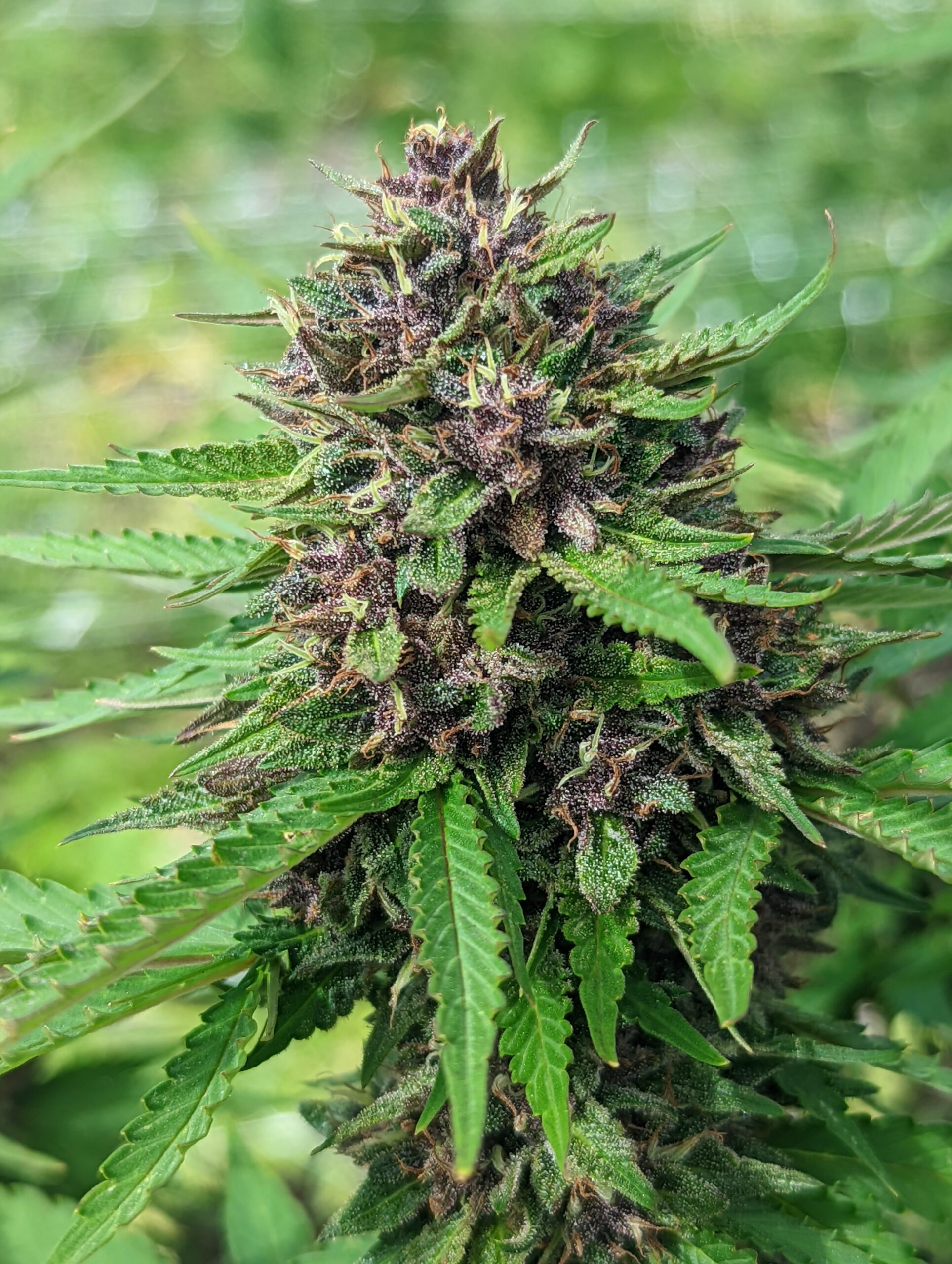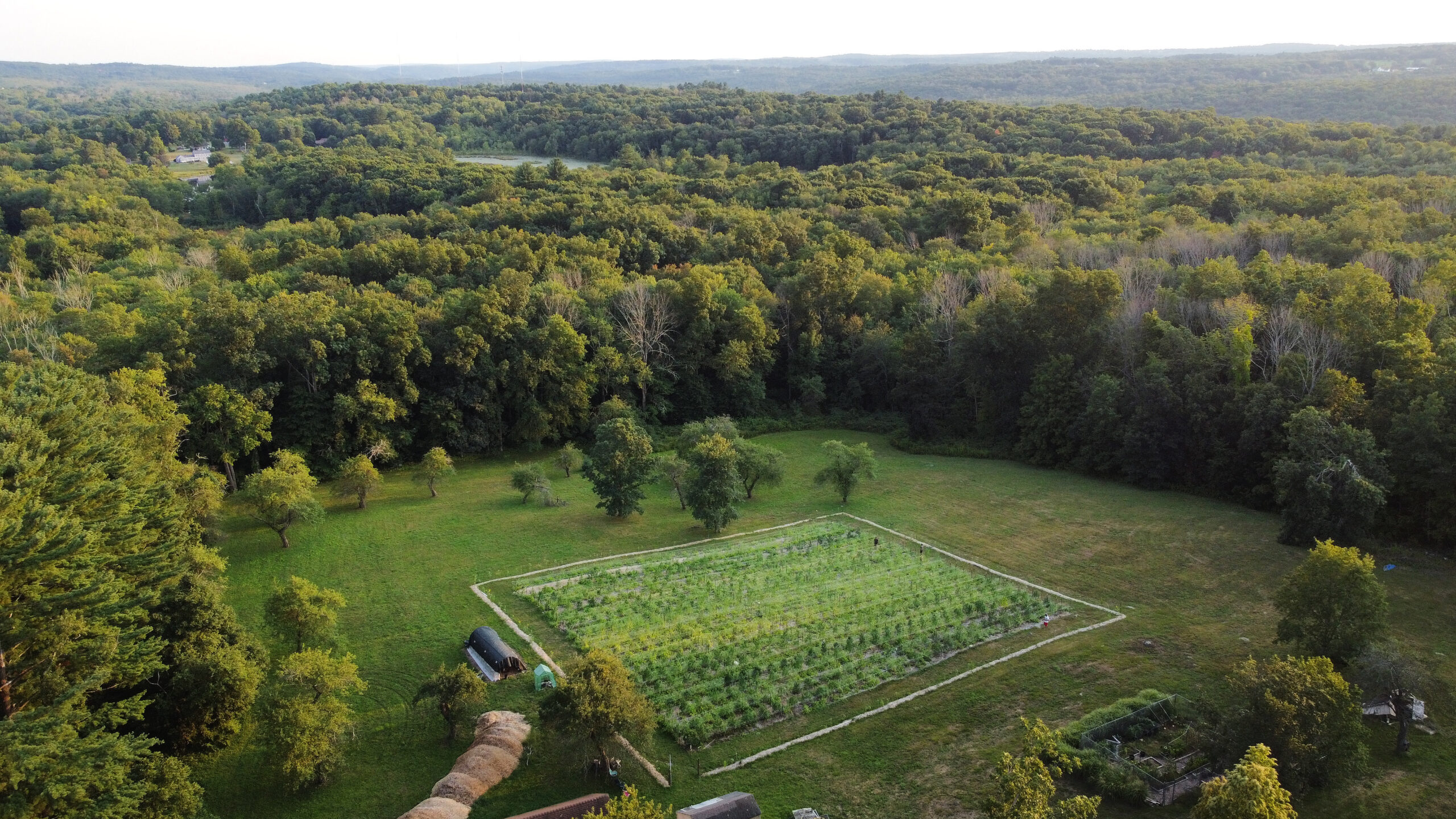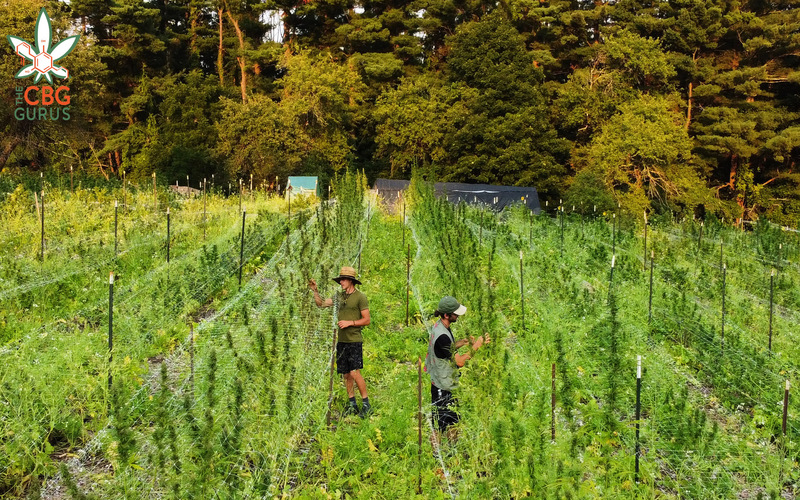Cannabis’ impact on the environment has been widely reported. Its impact on wildlife and local water systems, and the immense amounts of agricultural waste it produces, are just a few of the issues currently haunting commercial cultivators.
Eco-conscious cannabis farmers are working on incorporating more sustainable farming practices, like rainwater collection and composting, into their production. Yet, few have considered tackling these issues from a macro perspective, which works toward truly sustainable commercial cultivation within a broader biodiverse ecosystem.

Permaculture, a decades-old ideology, addresses cannabis’ environmental issues head on. But, interestingly, it’s never been applied at scale to commercial cannabis cultivation. Now, the founders of a Connecticut hemp farm have teamed up with a climate scientist to put permaculture’s fundamental principles into practice within the commercial sector.
What is Permaculture?
Permaculture isn’t just a cultivation method — it’s a total design system. Ross Mars, a permaculture teacher, designer, and author, explained, “Permaculture designs endeavor to integrate all components of the ecosystem in a holistic approach to sustainable living and practice.”
It started as a theory about permanent agriculture, but since the 1970s, permaculture has grown to encompass community layout, water use, architecture, technology, biodiversity, and so much more.
The specific strategies vary widely from one project to the next. For example, using the natural landscape to reduce wildfire risk, harvesting rainwater for use during the dry months, or utilizing no-till agriculture to build rich living soil. But it’s never just a single tactic. Permaculture weaves a dozen or more ideas into a comprehensive ecosystem design.
An Old Ideology, Now With Applications for Cannabis and Hemp
On a theoretical level, there has always been an overlap between cannabis’ hippy cultivator roots and the permaculture movement. Yet, despite the number of cannabis brands marketing themselves as eco-friendly, none have directly applied the principles of permaculture.
Shawn Magill, industrial hemp consultant and CBG Gurus’s co-founder, seeks to change this. Magill recently partnered with Eloisa Lewis, a climate scientist, permaculture expert, and founder of New Climate Culture, to actively incorporate the fundamentals of permaculture design into his USDA-certified organic hemp farm based in Harwinton, Connecticut.
Magill and his co-founder, Jacob Honig, are some of the first to apply these sustainable methods to commercial hemp production — and the first to partner with a climate scientist to make their farm more resilient and biodiverse.
What does this look like in practice? The CBG Gurus’ farm started as fallow grassland. Although a conventional farmer would till up the soil to make way for new crops, Magill and Honig instead chose to lay down cardboard and wood chips to avoid the destruction of the soil’s sensitive microbiome.

Within a year, these layers had broken down, decomposing into a rich subterranean ecosystem, creating beautiful nutrient-dense soil ready for the first round of plants. They’ve since continued to enrich the soil through inoculation with beneficial fungi, which they hope to offer as a secondary commercial crop.
During the growing season, they keep the field well mulched and cover cropped with daikon radish, peas, and clover. Intercropping continues soil regeneration but also reduces water evaporation. Magill directly attributes this practice to survival during the drought last summer. They irrigated less than 20 times throughout the growing season, the vast majority of which was from rainwater collection.
Again, permaculture isn’t just mulching or intercropping — it’s a holistic system design. Beneficial fungi, rainwater collection, and the other actions mentioned represent the tip of the iceberg for how CBG Gurus are working this approach into their commercial hemp farm.
The Big Experiment
This approach to farming is not formulaic, as it gives cultivators the space to experiment, to see what works and what doesn’t for their region, climate, and crop. Farmers are no longer consumers of commercial inputs (ex: nutrients, water, technologies, etc.). Instead, permaculturists strive to reduce, regenerate, and reuse in a manner that works within their local system.
Magill is the first to call his farm a “big experiment.” The first year was a steep learning curve. Yet, despite the challenges, their inaugural season gave them data to grow better into the second.
For instance, in the second year, Magill knew, “The beetles are coming in June and July, and then the caterpillars are coming at the end of July and August.” This knowledge allowed them to strategize, prepare, and grow better hemp.
In another experiment, they trialed 18 different cultivars last year. It was partly to determine which provided the best resistance to the common pests in their area and mold.
As Magill explained, “A particular variety may work really well in California, where the summers are a bit longer, and it’s really dry. But, here on the East coast, in my system, where it’s humid all the time, I need something that’s going to be really resilient.” As they watched the fall fog roll in, this trial helped CBG Gurus settle on strains that had some resilience to moisture and didn’t rapidly mold out.
With expertise provided by Lewis, CBG Gurus plan to continue their ongoing sustainable experimentation. This year’s projects include ramping up rainwater collection and intercropping with commercially valuable species.
Fundamentally, Permaculture is Collaborative
Magill and Lewis are a perfect example of permaculture’s collaborative nature. Lewis explains, “Farmers shouldn’t just be more collaborative as hemp and cannabis farmers. Farmers should be more collaborative as farmers.”
At the macro level, New Climate Culture is working to create connections and build a network of experts to help confront the challenges of climate change and sustainability head-on. At the micro level, Lewis is plugging farmers like Magill into a larger network to optimize local farming systems.

This is one of the most beautiful aspects of permaculture: It is inherently collaborative. In this regard, it stands out from the current commercial climate in cannabis cultivation because it fosters knowledge sharing rather than protecting trade secrets.
Hemp, a plant with hundreds of possible applications, fits perfectly into the holistic permaculture paradigm. It’s not just a single-use commodity; it’s adding to the local economy, sequestering carbon, cleaning up soil, fostering a diverse ecosystem, and so much more.
As cannabis and hemp evolves into a more sustainable commercial crop, permaculture’s core principles of regeneration and cooperation will no doubt play an increasingly important role.
Images courtesy of CBG Gurus. This article first appeared in Volume 5 Issue 1 of Cannabis & Tech Today. Read the full issue here.
Author
-
Jessica McKeil is a cannabis writer based in British Columbia, Canada. She has a passion for cannabis tech and scientific breakthroughs, which has led her to work with some of the industry's biggest brands. She is the owner and lead-writer of Sea to Sky Content (httpsss://www.seatoskycontent.com/); a content company focused on improving organic traffic through the power of words.






